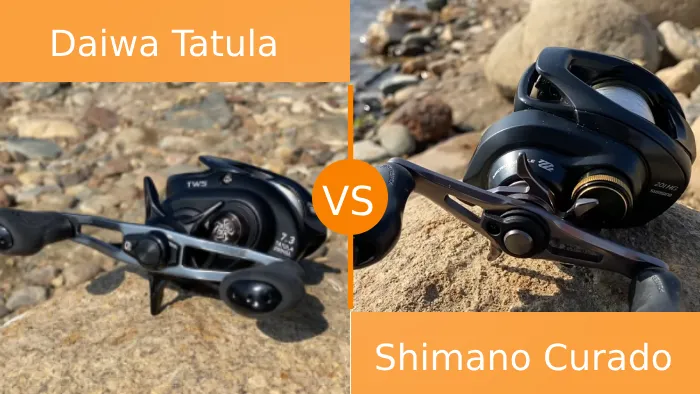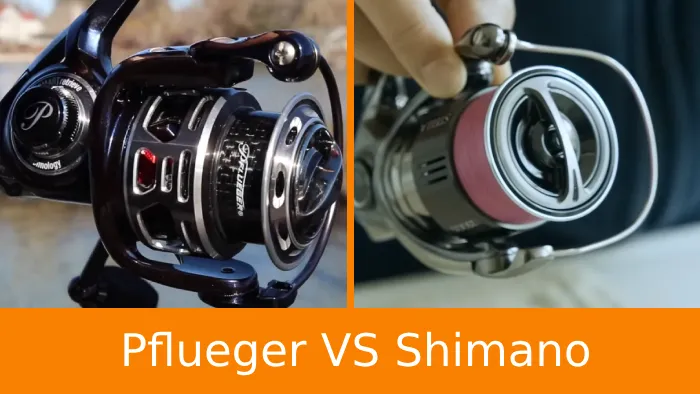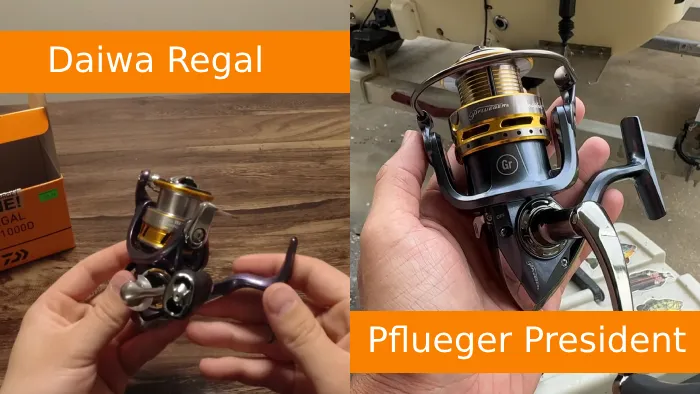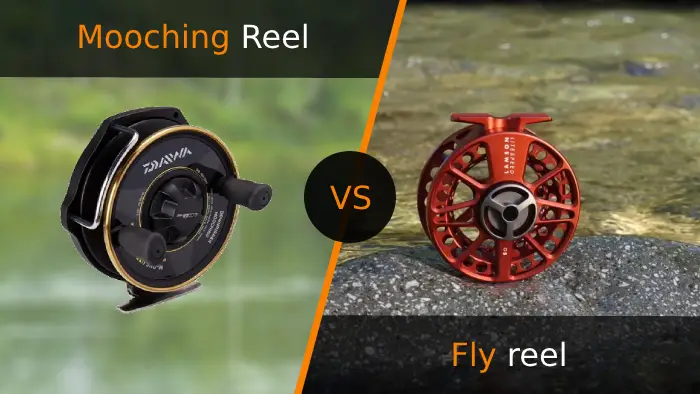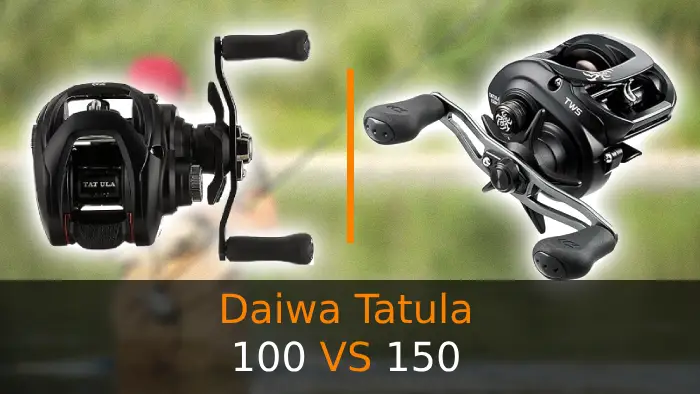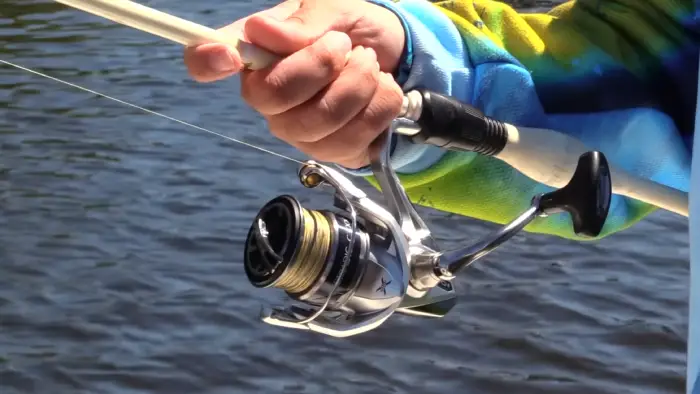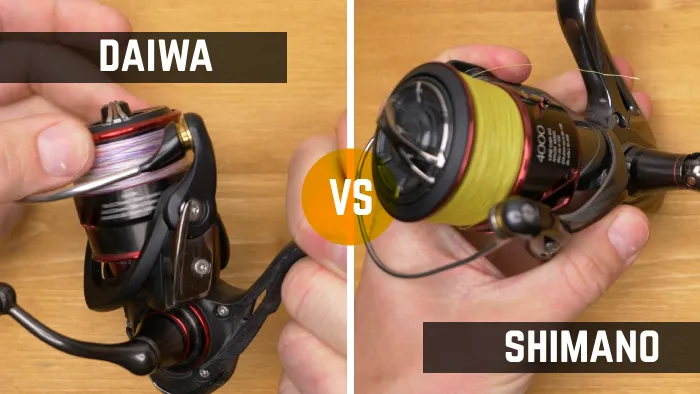Daiwa Tatula vs Shimano Curado Fishing Reels: 8 Differences
Daiwa Tatula and Shimano Curado fishing reels are two renowned names in the angling world, each offering unique features and capabilities.
As an angler, you know that the right reel can make all the difference in your fishing experience. Despite their similarities, these two fishing reel titans have some differences.
One key difference between Daiwa Tatula and Shimano Curado fishing reels lies in their intended purpose and design.
Daiwa Tatula reels are the choice of professional anglers who want versatility in freshwater and saltwater.
On the other hand, Shimano Curado reels have been purpose-built to withstand the rigors of saltwater fishing, boasting enhanced durability and corrosion resistance as a result.
In addition to these differences, there are also differences in the casting performance, gear ratio, drag system, and other aspects.
We’ll explore all the differences in greater detail, empowering you to select the reel that perfectly aligns with your fishing needs and preferences.
Differences Between Daiwa Tatula and Shimano Curado Fishing Reels
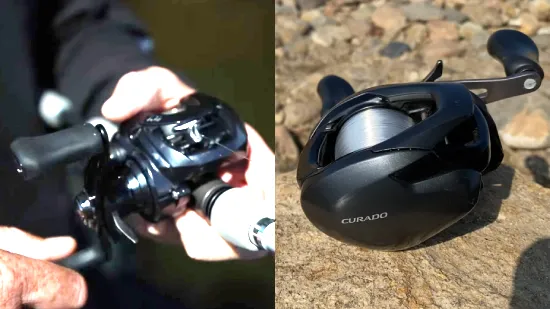
When comparing Daiwa Tatula fishing reels to Shimano Curado fishing reels, there are several key differences to consider.
- Purpose and design
- Casting performance
- Frame material
- Gear ratios
- Drag system
- Bearing system
- Line capacity and spool design
- Price point
1. Purpose and Design
When deciding which one to purchase, you should consider the purpose and design of Daiwa Tatula and Shimano Curado fishing reels.
The Daiwa Tatula series is designed to meet the demands of professional anglers, making them suitable for both freshwater and saltwater fishing.
These reels are known for their versatility and durability, allowing you to tackle a wide range of fishing conditions.
On the other hand, Shimano Curado fishing reels are specifically designed for saltwater fishing. They’ve undergone significant revamps to enhance their durability and corrosion resistance, ensuring they can withstand the harsh conditions of saltwater environments.
With their specialized design, these reels provide anglers with the necessary features to handle the challenges of saltwater fishing.
2. Casting Performance
To improve your casting performance, consider the differences in line friction and brake settings between the Daiwa Tatula and Shimano Curado fishing reels.
The Tatula series is equipped with the T-Wing System (TWS), which reduces line friction and allows for longer, more accurate casts.
This innovative feature ensures that your line flows smoothly and effortlessly off the spool, minimizing any resistance that could hinder your casting distance.
On the other hand, Shimano Curado reels utilize the SVS Infinity Braking System, which offers adjustable brake settings.
This allows you to fine-tune your cast and precisely control the speed and distance. Adjusting the brake settings to suit your casting style and preferences allows you to optimize your casting performance and achieve greater accuracy and distance.
Both the T-Wing System and SVS Infinity Braking System are designed to enhance your overall casting experience, but the choice between the two ultimately depends on your personal preferences and fishing techniques.
3. Frame Material
The frame material is another essential factor when choosing between Daiwa Tatula and Shimano Curado fishing reels.
The Tatula series has a rugged, lightweight aluminum frame and side plate. This design provides an excellent balance of strength and weight, essential for long fishing hours. The aluminum construction also makes Tatula fishing reels resistant to saltwater corrosion.
Conversely, Shimano Curado fishing reels feature a Hagane Body, which is a metal reel body with high rigidity. This design reduces body flex during fishing, making them more durable in the long term.
The Hagane Body also makes Curado fishing reels less prone to scratches, nicks, and other damage, ensuring they last longer.
Both the aluminum frame on Daiwa Tatula fishing reels and the Hagane Body on Shimano Curado fishing reels have their advantages.
The aluminum construction offers an excellent balance between strength and weight, while the Hagane Body offers higher rigidity and durability.
4. Gear Ratios
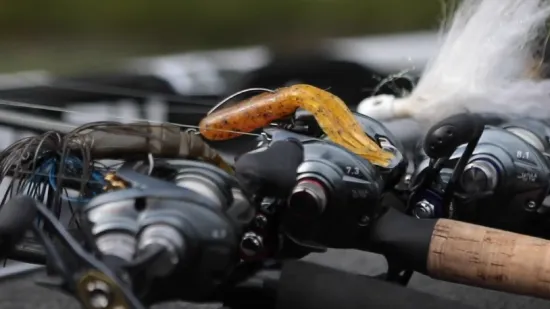
Another key difference between Daiwa Tatula and Shimano Curado fishing reels is the range of gear ratios each series offers.
Daiwa Tatula reels provide anglers with a range of gear ratios to choose from, including 5.4:1, 6.3:1, 7.3:1, and 8.1:1. This allows you to select the gear ratio that best matches your preferred fishing style or technique.
Shimano Curado, on the other hand, also offers various gear ratios to choose from but with an emphasis on specialized gear ratios to cater to specific fishing styles.
For example, Shimano Curado reels come in lower gear ratios, specifically 6.2:1, that cater to crankbait fishing and require a slower retrieval.
However, for topwater or flipping and pitching, Shimano Curado reels offer higher gear ratios, such as 8.5:1, so that you can retrieve more quickly.
5. Drag System
As an angler, the drag system is one of the most critical components of a fishing reel, and it’s essential to ensure that you choose the right one.
Daiwa Tatula fishing reels have an Ultimate Tournament Carbon Drag (UTD) system, known for its smooth and consistent drag performance.
The UTD system is ideal for precision lure or bait presentations and offers great sensitivity required for light-line techniques.
In contrast, Shimano Curado fishing reels feature a drag system designed to handle the demands of saltwater fishing efficiently, offering reliability under heavy loads.
The drag technology is designed to withstand heavy saltwater use, making it ideal for offshore fishing in harsh environments.
The drag systems of both these reels are relatively similar in terms of efficiency and performance, but their primary function is different.
6. Bearing System
The Tatula series features an 8 Bearing System that provides ultra-smooth operation and anti-reverse functionality. This system is designed to ensure that every crank is buttery-smooth, which can help you feel more connected to the fish you’re targeting.
In comparison, Shimano Curado reels likely have a similar number of bearings for smooth operation, but the specific bearing technology may vary. They come with 3 Ball Bearings and a One-Way Roller Clutch Bearing, which is designed to provide reliable anti-reverse protection.
7. Line Capacity and Spool Design
The line capacity and spool design are also essential considerations when choosing a fishing reel. The Daiwa Tatula Type-HD200 offers greater line capacity, which can be beneficial for handling heavier lines or situations requiring longer casts.
The MONO line capacity is 14/120 and 16/100, while the BRAID line capacity is 40/140 and 55/105.
In contrast, Shimano Curado reels come in different sizes, allowing you to choose the one that matches your line capacity needs.
The Shimano Curado line capacity for Mono is 180/8, 155/10, 110/14 (yd/lb), while that for Braid is 190/30, 120/50, and 80/65 (yd/lb).
This makes Shimano Curado suitable for a range of fishing scenarios, from light to heavy-duty fishing in New Hampshire or in other fishing areas.
8. Price Point
Price is a crucial factor to consider when buying any product, including fishing reels. Daiwa Tatula offers a balance of features at an affordable price point. It’s often considered a great value for the features it offers, making it a popular choice among anglers who want a high-quality fishing reel without breaking the bank.
Nevertheless, Shimano Curado reels are positioned as mid to high-range fishing reels due to their specialized design for saltwater fishing.
Shimano Curado is built to last, and it’s designed to offer exceptional performance under harsh environmental conditions. This makes Shimano Curado a premium fishing reel, with a higher price tag than Daiwa Tatula.
However, if you are willing to pay a premium price, you can be sure of getting a reel that offers exceptional performance and durability.
Comparison Chart Between Daiwa Tatula and Shimano Curado Fishing Reels:
| Feature | Daiwa Tatula | Shimano Curado |
| Purpose and Design | Versatile for freshwater and saltwater | Specifically designed for saltwater |
| Casting Performance | T-Wing System (TWS) for reduced line friction | SVS Infinity Braking System for precise control |
| Frame Material | Rugged, lightweight aluminum frame and side plate | Hagane Body for high rigidity and durability |
| Gear Ratios | 5.4:1, 6.3:1, 7.3:1, 8.1:1 | Lower gear ratios (6.2:1) for crankbait fishing, higher gear ratios (8.5:1) for topwater or flipping and pitching |
| Drag System | Ultimate Tournament Carbon Drag (UTD) | Designed for saltwater, offering reliability |
| Bearing System | 8 Bearing System for smooth operation | 3 Ball Bearings, One-Way Roller Clutch Bearing |
| Line Capacity/Spool | MONO: 14/120, 16/100 BRAID: 40/140, 55/105 | MONO: 180/8, 155/10, 110/14 (yd/lb) Line Capacity – Braid: 190/30, 120/50, 80/65 (yd/lb) |
| Price Point | Affordable, offers good value for features | Positioned as mid to high-range reels for durability |
What is the typical lifespan of Shimano Curado fishing reels?
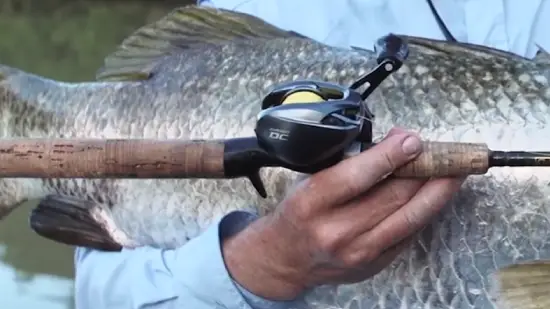
The average lifespan of Shimano Curado fishing reels can vary depending on usage, maintenance, and fishing conditions.
However, with proper care and regular maintenance, Shimano Curado reels are known to be durable and can last well beyond 7-8 years.
Some anglers have reported using their Curado reels for a decade or more without significant issues. It’s essential to keep the reel clean, lubricated, and free from contaminants like sand and saltwater to maximize its lifespan.
Additionally, occasional servicing by a professional can help ensure the reel continues to perform optimally over the years.
What does the S mean on a Daiwa Tatula fishing reel?
The “S” on a Daiwa Tatula fishing reel typically stands for “Shallow.” In the context of reel designations, it indicates that the reel has a shallow spool.
This means that the spool is designed to hold a smaller amount of fishing line compared to a standard spool of the same model.
The shallow spool is often preferred for specific fishing techniques, such as finesse or light-line fishing, where you don’t need a large amount of line capacity.
It allows for better line management and casting performance in situations where precision and control are crucial.
So, if you see an “S” on a Daiwa Tatula reel, it signifies that it’s equipped with a shallow spool designed for specific angling needs.
Make the Right Reel Decision Between Daiwa Tatula and Shimano Curado
When comparing Daiwa Tatula fishing reels and Shimano Curado fishing reels, it’s clear that both brands offer high-quality options for you.
Each reel has its own unique features and advantages, catering to different fishing styles and preferences.
Whether you prioritize versatility, casting performance, durability, or price, there’s a reel that suits your needs.
Daiwa Tatula excels in versatility and affordability, making it an excellent choice for those looking for a reliable all-around reel.
Shimano Curado, with its specialized design for saltwater and premium construction, is ideal for anglers seeking durability in harsh conditions.Ultimately, the choice between these two great brands comes down to your specific fishing requirements and budget.

